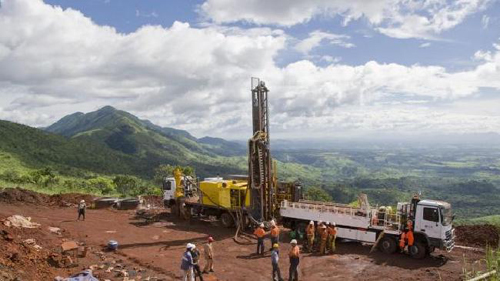
Unlike alumina and aluminium, the bauxite market is experiencing strong growth, mainly due to demand from China. (Bauxite is refined into alumina, which is smelted into aluminium.)

Unlike alumina and aluminium, the bauxite market is experiencing strong growth, mainly due to demand from China. (Bauxite is refined into alumina, which is smelted into aluminium.)
Rio Tinto remains enmeshed in Guinea’s economic and political landscape despite its October 28 deal to quit its scandal-ridden Simandou iron ore project in the west African nation.
The non-binding sale of its Simandou stake for $US1-$US1.3 billion to its 9.9 per cent shareholder, China’s state-owned Chinalco, on the project declaring first commercial production, gave the impression that Rio had waved goodbye to Guinea.
Since then controversy has flared around Rio’s $US700 million “settlement’’ payment in 2011 to the Guinean government to secure its Simandou stake, and the later $US10.5m payment to a French middleman for advisory services in clinching the deal.
The controversy led to the shock sacking of two senior Rio executives on November 16.
While it plans to exit Simandou — any payments could be years away because the deal is tied to first commercial production being achieved — Rio is sticking around when it comes to Guinea’s bauxite riches. It is in for the long haul through its little-known stake in Halco Mining. Halco owns a 49 per cent stake in the world’s second biggest bauxite producer, Compagnie des Bauxites de Guinee.
The government of Guinea holds a 49 per cent equity stake in CBG, with the remaining 51 per cent held by Halco Mining, a joint venture owned by Rio (46 per cent), Alcoa (46 per cent) and the privately owned Channel Islands commodities trader Dadco (8 per cent).
Rarely talked about by any of the companies involved, GBG has been a big producer for decades, and it is getting bigger through a $US700m-plus expansion from 14.5 million tonnes of bauxite for export to mainly Atlantic markets to 18.5 million tonnes annually.
GBG got an airing at Rio Tinto’s investor briefing in Sydney last Thursday, with one analyst asking if Rio was concerned about the increasing level of bauxite exports from Guinea, given there was the potential to erode the value of Rio’s $US1.9bn Amrun bauxite development in Queensland, which has China as its target market — a major growth market that Rio thinks will import an additional 100 million tonnes of bauxite annually by 2030.
Rio’s chief executive of aluminium, Alf Barrios, confirmed the CBG expansion was under way but noted the volume was already committed to an alumina refinery in the Middle East.
“When we look at all the possible alternative sources of bauxite and the mines and the depletion of mines, we still see opportunities for growth taking into account the projects under way in Guinea,’’ Mr Barrios said.
Numerous expansions and new bauxite projects are proposed in Guinea. But the broader industry has viewed with alarm the rise of a Chinese-backed project, Societe Miniere de Boke. For as little as $US200m, SMB is suspected of having as much as 30 million tonnes of annual capacity in what one observer has described as a “strip and ship’’ operation.
At last Thursday’s briefing, Rio chief executive Jean-Sebastien Jacques said the “bauxite space’’ was all about having options. “As and when the markets develop, what we want is to be in a position to bring online the right capacity with the right quality of product for the right customer at the right point in time,’’ Mr Jacques said.
China has expanded its aluminium smelting and alumina refinery capacity on a massive scale in the past 15 years, matching up abundant cheap coal to its domestic bauxite resources in much the same way Australia did in the 1960s and 1970s. But China’s bauxite resources are limited. Imports have grown from 2.2 million tonnes in 2005 to 50 million tonnes last year.